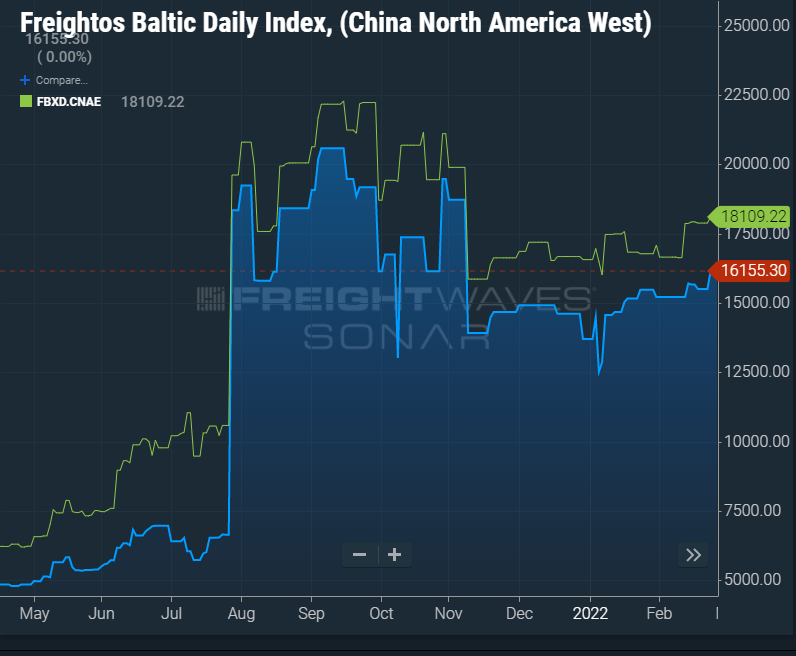The Suez Canal Authority has released a new set of canal tolls on all vessels traveling both north and south. The increase for both full and empty vessels will be either 5%, 7% or 10%, depending on carrier type, and become effective Tuesday.

This is the second toll increase on all vessels, with the exception of LNG and cruise ships, in the last month. Those two vessel classes were spared when the Suez Canal Authority (SCA) announced in early November that it would increase transit tolls through the canal by 6% beginning in February.
Xeneta Chief Analyst Peter Sand told American Shipper, “This new toll announcement is substantial for a container ship that already pays $500,000 to $600,000 per transit.”
The SCA makes its money on container shipping and continues to see record volumes. According to Sand, for a large container ship, this hike means a one-way transit goes from $625,000 to $675,000.
“Global trade just got more expensive,” he said.
Given the length of voyage time from China to the United States and the increase in fuel prices, carriers will have to decide which poison pill to take: Go around the Horn of Africa and use more fuel or go through the Suez. The Suez will be a less costly option.
The timing of this additional rate case comes as record volumes are traveling through this key waterway. The trend of increased East Coast trade is expected to continue as the clock ticks down to the International Longshore and Warehouse Union contract expiration of July 1.
With a transit of anywhere from 80-100 days depending on which metrics logistics managers follow, decisions need to be made now as to how much trade they want to move away from the West Coast ports in the event of any type of labor slowdown.
SONAR Freightos Baltic Index shows the demand for an East Coast box continues to be high.

“The number of journeys transiting the Suez Canal has shown an increase over the past three years in some sectors, especially in the Dry Bulk and LNG sectors,” explained Charlotte Cook, head trade analyst for VesselsValue. “When comparing voyages crossing the Suez Canal in January this year, with pre-pandemic levels back in 2019, journeys have increased by a significant 68%.
“Looking at LNG, comparing voyages in the same time frame, journeys have increased by over 90%, suggesting these sectors are causing the major transit zone to be increasingly utilized.”

Cook added, “Containers have seen a less significant increase of 1.5% when comparing journey counts in January 2022 and 2019, which can be explained by the trend of larger container vessels being favored, taking longer voyages around the Cape of Good Hope. Tanker journeys through the Suez Canal have also been declining since mid-2020 due to the weak tanker market.”













